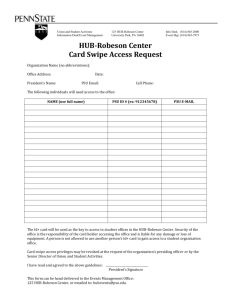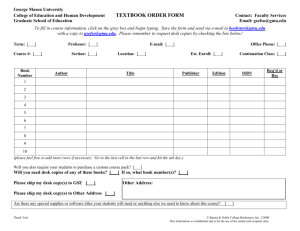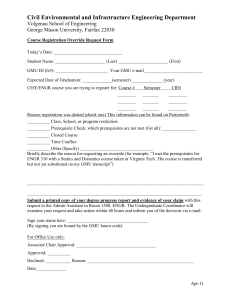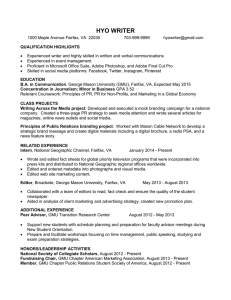SPORTS ANALYTICS Analysis
advertisement
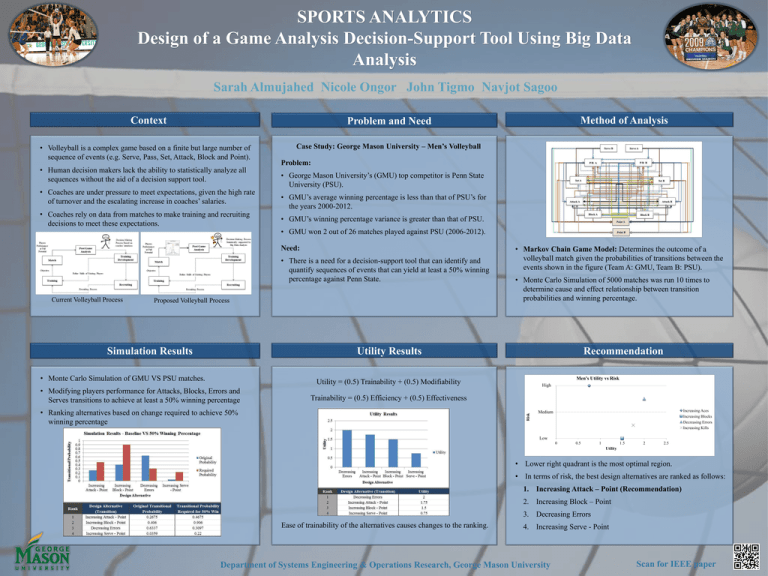
SPORTS ANALYTICS Design of a Game Analysis Decision-Support Tool Using Big Data Analysis Sarah Almujahed Nicole Ongor John Tigmo Navjot Sagoo Context • Volleyball is a complex game based on a finite but large number of sequence of events (e.g. Serve, Pass, Set, Attack, Block and Point). • Human decision makers lack the ability to statistically analyze all sequences without the aid of a decision support tool. • Coaches are under pressure to meet expectations, given the high rate of turnover and the escalating increase in coaches’ salaries. • Coaches rely on data from matches to make training and recruiting decisions to meet these expectations. Case Study: George Mason University – Men’s Volleyball Problem: • George Mason University’s (GMU) top competitor is Penn State University (PSU). • GMU’s average winning percentage is less than that of PSU’s for the years 2000-2012. • GMU’s winning percentage variance is greater than that of PSU. • GMU won 2 out of 26 matches played against PSU (2006-2012). Need: • There is a need for a decision-support tool that can identify and quantify sequences of events that can yield at least a 50% winning percentage against Penn State. Current Volleyball Process Method of Analysis Problem and Need Proposed Volleyball Process Simulation Results • Markov Chain Game Model: Determines the outcome of a volleyball match given the probabilities of transitions between the events shown in the figure (Team A: GMU, Team B: PSU). • Monte Carlo Simulation of 5000 matches was run 10 times to determine cause and effect relationship between transition probabilities and winning percentage. Recommendation Utility Results • Monte Carlo Simulation of GMU VS PSU matches. Men's Utility vs Risk Utility = (0.5) Trainability + (0.5) Modifiability • Modifying players performance for Attacks, Blocks, Errors and Serves transitions to achieve at least a 50% winning percentage High Trainability = (0.5) Efficiency + (0.5) Effectiveness Risk • Ranking alternatives based on change required to achieve 50% winning percentage Increasing Aces Increasing Blocks Decreasing Errors Increasing Kills Medium Low 0 0.5 1 1.5 2 2.5 Utility • Lower right quadrant is the most optimal region. • In terms of risk, the best design alternatives are ranked as follows: 1. Increasing Attack – Point (Recommendation) 2. Increasing Block – Point 3. Decreasing Errors Ease of trainability of the alternatives causes changes to the ranking. 4. Increasing Serve - Point Department of Systems Engineering & Operations Research, George Mason University Scan for IEEE paper

